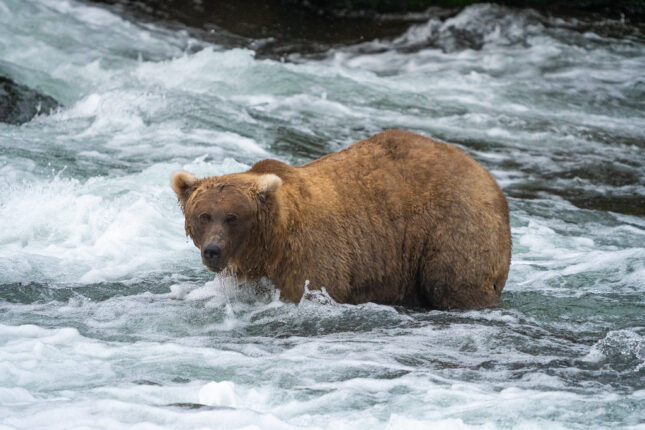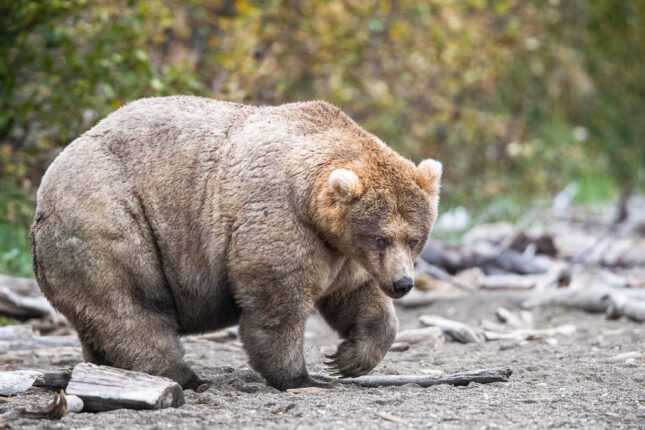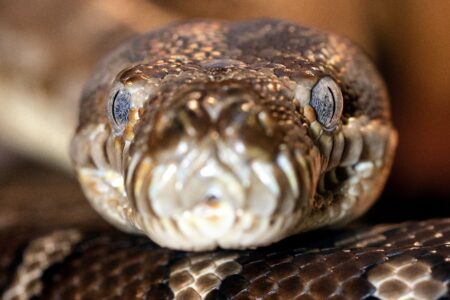Fat Bear Week 2025: Alaska’s bulkiest bears fight for the ultimate crown
The biggest (and fattest) event of the year is upon us. As the bears in Katmai National Park in Alaska prepare to hibernate for the winter, the game is on to become the sturdiest bear around. Competition is fierce for the best position by the river, the most fish, and the chunkiest winter body.
As the bears race against the clock to fatten up, a contest opens to the public to support their favourite bear along their journey.
Fat Bear Week was created in 2014. Originally, it was a one day event to showcase the development of bears throughout the summer in Katmai National Park, an important habitat for salmon and brown bears. It has since blossomed into a week-long extravaganza with participants all over the world. In the last few years, over a million voters have tuned in to become involved in the pre-hibernation lives of these magnificent, rotund creatures by following them on the BearCam and voting for their favourite fat bear. This year, from the 23rd to the 30th of September, the public can battle it out to select the champion of Fat Bear Week 2025. As the Netherlands is a bear-less country, this is a great week for any bear enthusiasts amongst students in Leiden.
Choose a favourite bear!
A simple misconception is that the goal of this contest is to vote for the fattest bear. In such a competition, there would be an objective winner which would take all the fun out of it! The true goal is to vote for your favourite fat bear. Fat Bear Week allows us to see how the bears have overcome challenges during the year and understand their fight to survive in the harsh conditions of the wilderness. The victor should be a bear who has struggled against the odds and yet still perseveres.
Choosing a favourite bear is no easy task. Each bear at Katmai has its own story and motivations for getting fat. Mother bears must bulk up to nurse their cubs, and still have enough energy left for fighting off any opponents who get too close. Young bears may be looking to establish themselves and battle competitors for the best fishing spot. Older bears will be trying to maintain dominance in the hierarchy of the river against these younger upstarts. So make sure to choose your bear well!
Old rivals
Dramatic events have unfolded in previous years. In the summer of 2024, the reigning champion of Fat Bear Week since the previous year, 128 Grazer, was gorging by the river with her two cubs. One cub was washed over the waterfall directly into the path of another contender, 32 Chunk. Grazer rushed to his defence but it was too late. Chunk attacked, ultimately killing the cub. Both bears were voted through to the final round. But this time it was personal. With the help from her fans around the world, 128 Grazer emerged victorious, with her well- earned prize of one year’s worth of bragging rights. Both bears will be returning for Fat Bear Week 2025.


How can I join in?
The participating bears can be found under the ‘Meet the Bears’ section of the Fat Bear Week website. Here, you can get to know the bears and choose a favourite! The website features a profile of each bear, including their physical description so they can be recognised on the BearCam. Observers can follow their favourite bears throughout their daily activities – mainly fishing and sitting around. The winners of previous years can be found in the ‘Hall of Champions’. Voting opened on Tuesday evening, and the winner will be announced after the final vote on the 30th September.
How do the bears get so fat?
In the late summer and autumn, bears undergo hyperphagia, the almost constant need to eat and drink. Their goal is to gain enough weight to survive the harsh cold of winter when food is scarce. The bears must fatten up considerably, as they can lose up to one third of their body weight during hibernation. Hibernation is the state of minimal activity reached so that the bears can conserve energy. Heart rate and breathing slows, and body temperature drops. When undergoing hibernation, bears do not consume food or water at all, but instead survive by metabolising their fat. They also do not urinate or defecate. Instead, the digestive waste is recycled into proteins that maintain the muscle mass and organ tissues of the bears.
Unlike some other hibernating animals, bears do not sleep continuously throughout their whole period of hibernation. They reach a light sleep called torpor, from which the bear can wake up if necessary. Pregnant bears give birth during this time, usually within the first two months. This gives the cubs a chance to grow throughout the winter. Once the snow begins to melt in the spring, the bears will leave their den in search of food.
What do the bears eat?
From late June to mid October, dozens of bears congregate around Brooks river to feast on the salmon which return from the sea to their spawning ground in the river. A two metre-high waterfall, halfway along the river is what makes this area a particularly rewarding hunting ground for hungry bears. The salmon are forced to gather in the plunge pool under the falls before leaping up and over the water to continue their journey upstream. Many are snapped up in the plunge pool, and a few skilled bears catch the leaping salmon in their bid to swim upstream. Many of the live cameras following the bears are positioned around Brooks river, and it has been a popular tourist attraction since the 1950s.
Make sure to choose your favourite bear and cast your vote in Fat Bear Week 2025 before voting closes on 30th September!








0 Comments
Add a comment